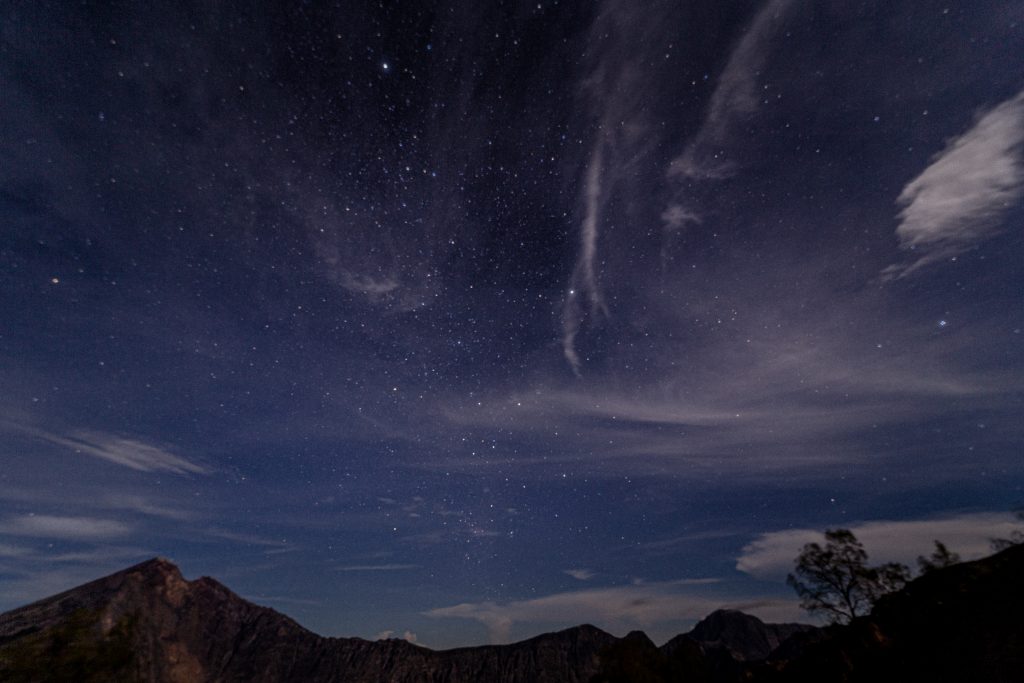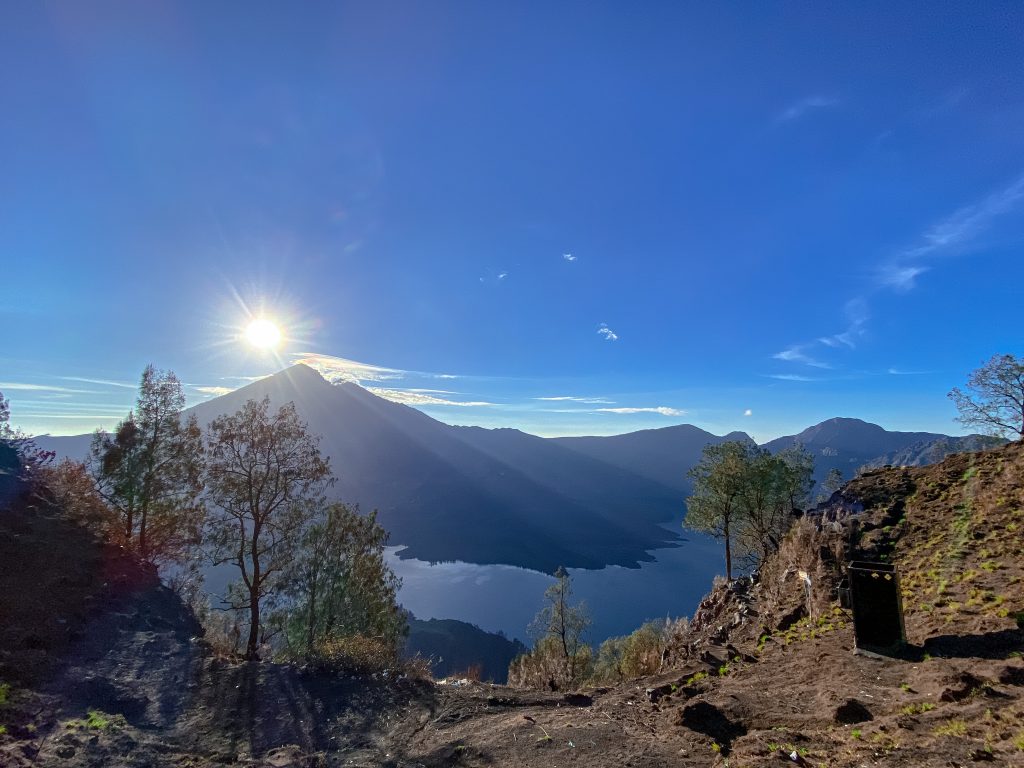
Lying east of Indonesia’s tourist hotspot Bali is the quaint island of Lombok. It’s home to the country’s second-highest volcano, Mount Rinjani which towers at 3,726m above sea level.
Climbing Mount Rinjani is no easy feat. The trek up to its crater rim stretches a total of 7.9km with a vertical height of 2,639m. Scaling the summit is even more arduous, with an additional distance of 10.4km from the crater rim.
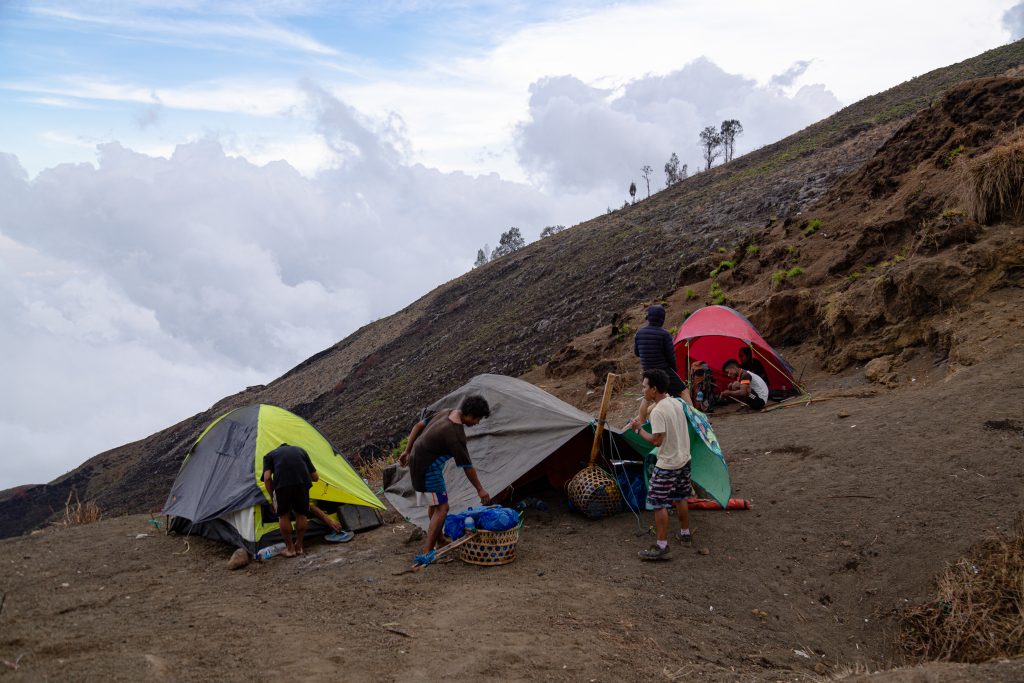
This is what lead trekker Razikin (pictured below), 24, does for a living. “(In a week), I climb 2 to 3 times,” said the young Indonesian who’s been working for Hajar Trekking in the past 6 years.
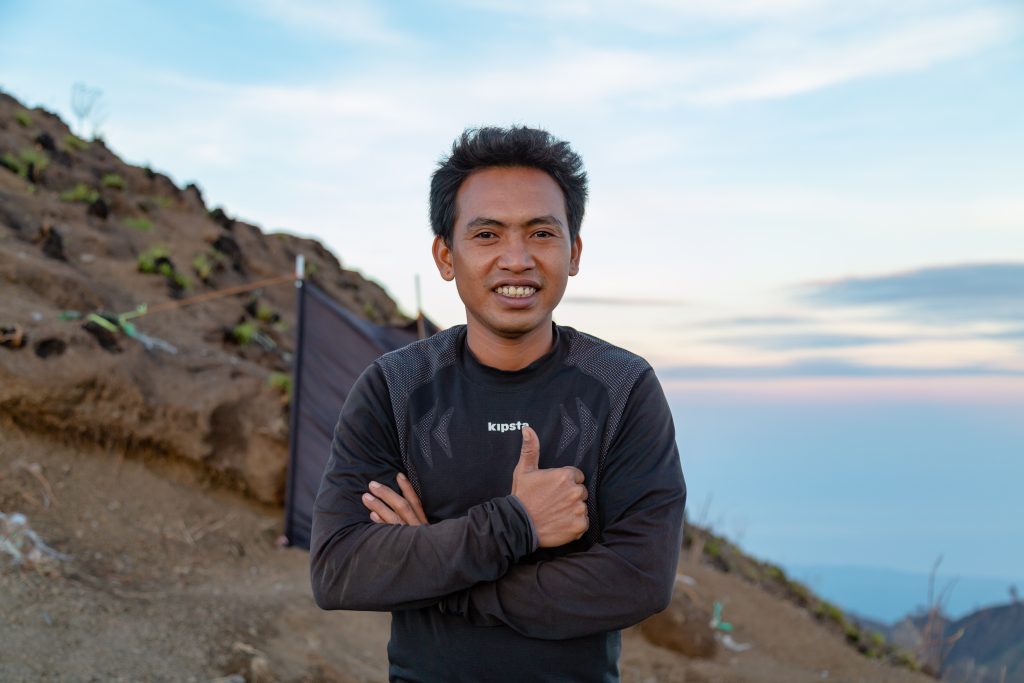
The Porters
To qualify as a lead trekker, one has to first serve as a porter, carrying water, food, and cooking supplies for tourists who have signed up for the hike. The typical load a porter has to carry is between 25kg and 35kg.
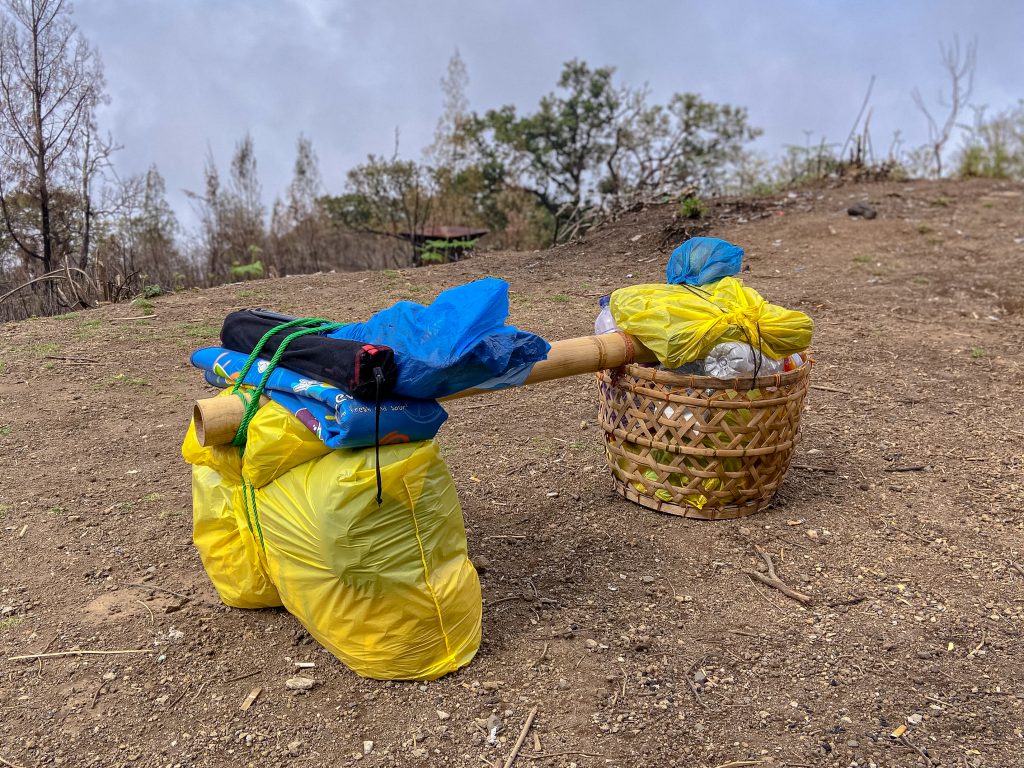
Some porters are still in their teens, and many are from less fortunate families, Mr Razikin shared. Porters who can’t afford sports shoes would still go ahead with the ascent in their flip-flops. By the end of the journey, their feet are usually covered with painful blisters.
“Many people cry, it’s so hard,” Mr Razikin recalled.
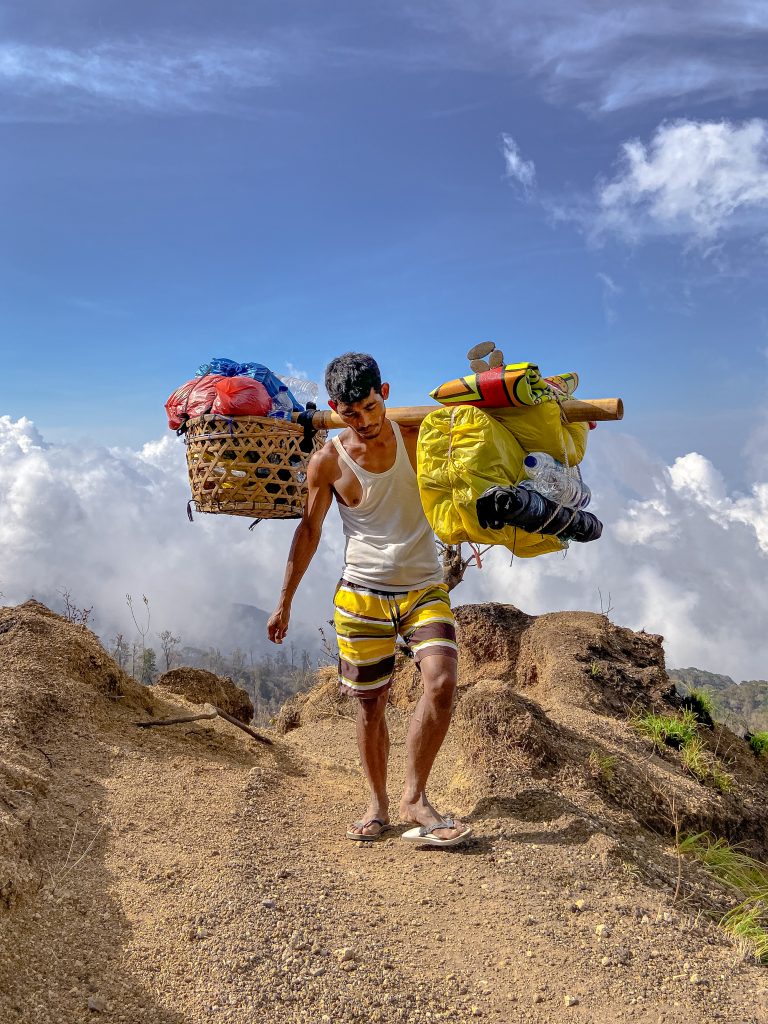
Porters are allowed to lead a group hike only after a few years of service, but those with a better command of English and can communicate with foreign travellers better tend to be promoted faster. Mr Razikin, for example, was promoted after a year.
A Volatile Job
Mr Razikin also knows the dangers of his job.
For 3 months a year, Mount Rinjani is closed for hiking due to safety concerns. The closure can be prolonged when natural disasters strike.
After Lombok braved two deadly earthquakes and landslides in 2018, the hiking trails at Mount Rinjani were closed for almost a year as the National Park Agency and the Center for Volcanology and Geological Hazard Mitigation assessed the safety of the volcano.
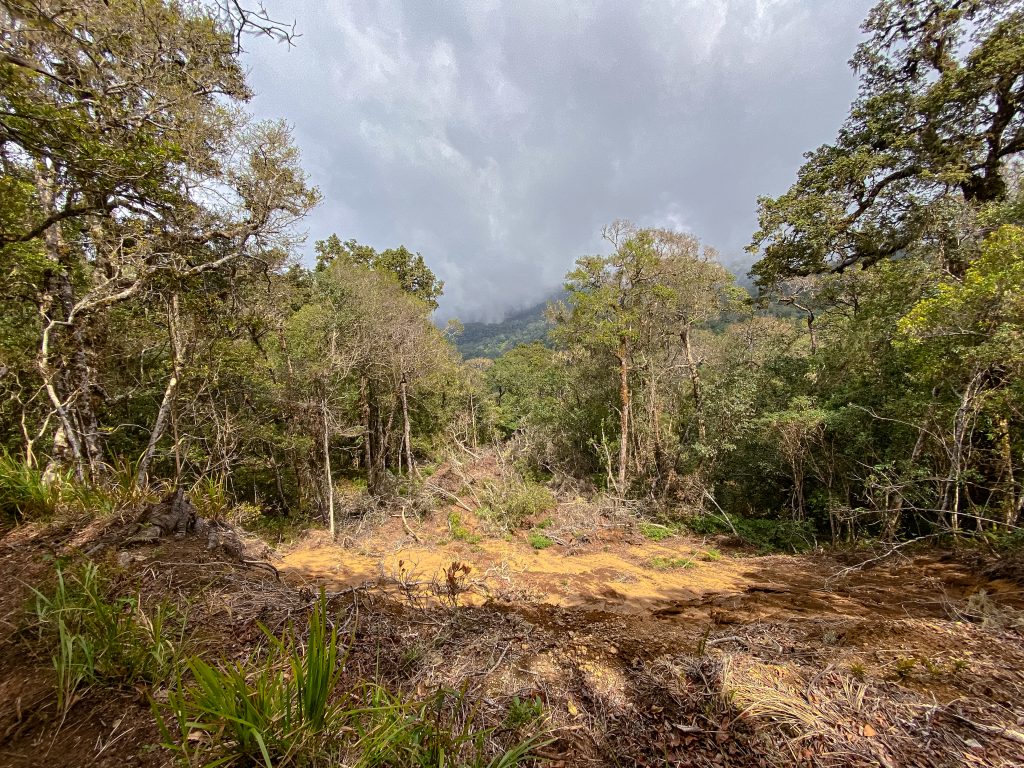
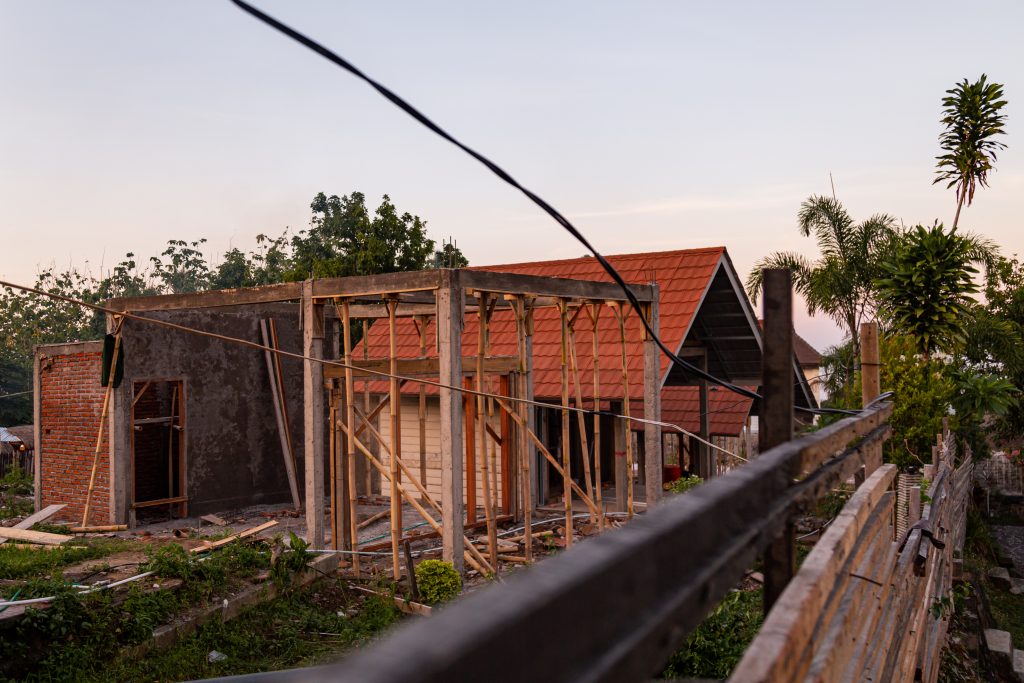
Last October, the national park was also closed for 2 weeks after a forest fire broke out near the summit.

With the eruptions of New Zealand’s Whakaari (White Island) last December and The Philippines’ Taal Volcano in January, the heightened volcanic activities have also deterred some travellers from visiting active volcanoes. This is bad news for the likes of Mr Razikin, who counts on volcano tourism for a living.
When the trails are closed, Mr Razikin and other porters will have to find work elsewhere, such as Bali.
“(In Bali), I work in restaurants, massage parlors,” the 24-year-old said. He can make an average of 1.5 million rupiah (S$150) a month from the odd jobs, but that’s “not enough” to sustain his family.
In contrast, if he leads a 2-day, 1-night tour up Mount Rinjani, he can make 400,000 rupiah (S$40.20), and receives roughly another 400,000 rupiah in tips. If he makes 3 such trips a week, he can earn 2.4 million rupiah, or close to S$1,000 a month.
Still Hopeful
As such, Mr Razikin still prefers his job as a trekking guide despite its dangers. Having a dangerous job is better than having no income.
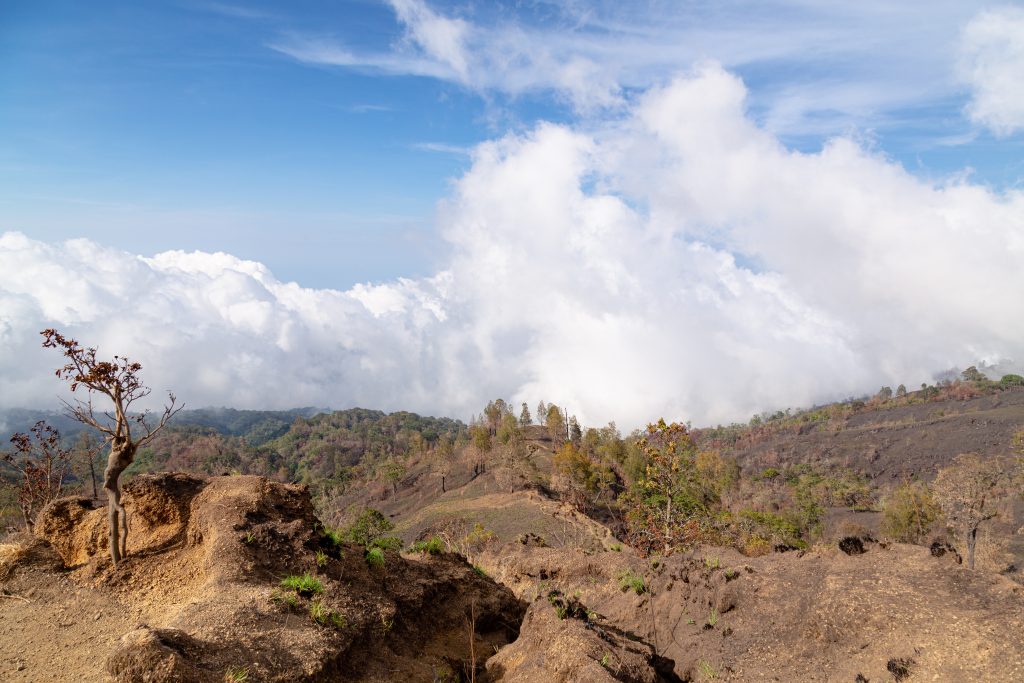
“Lombok is so quiet, not many people have jobs,” he said. “I’m very lucky.”
He’s now in the process of building his website and working towards being his own boss.
“This is a family dream,” he quipped.
When the national park re-opens in April, Mr Razikin hopes he can show thrill-seekers the way to the volcano summit again.
